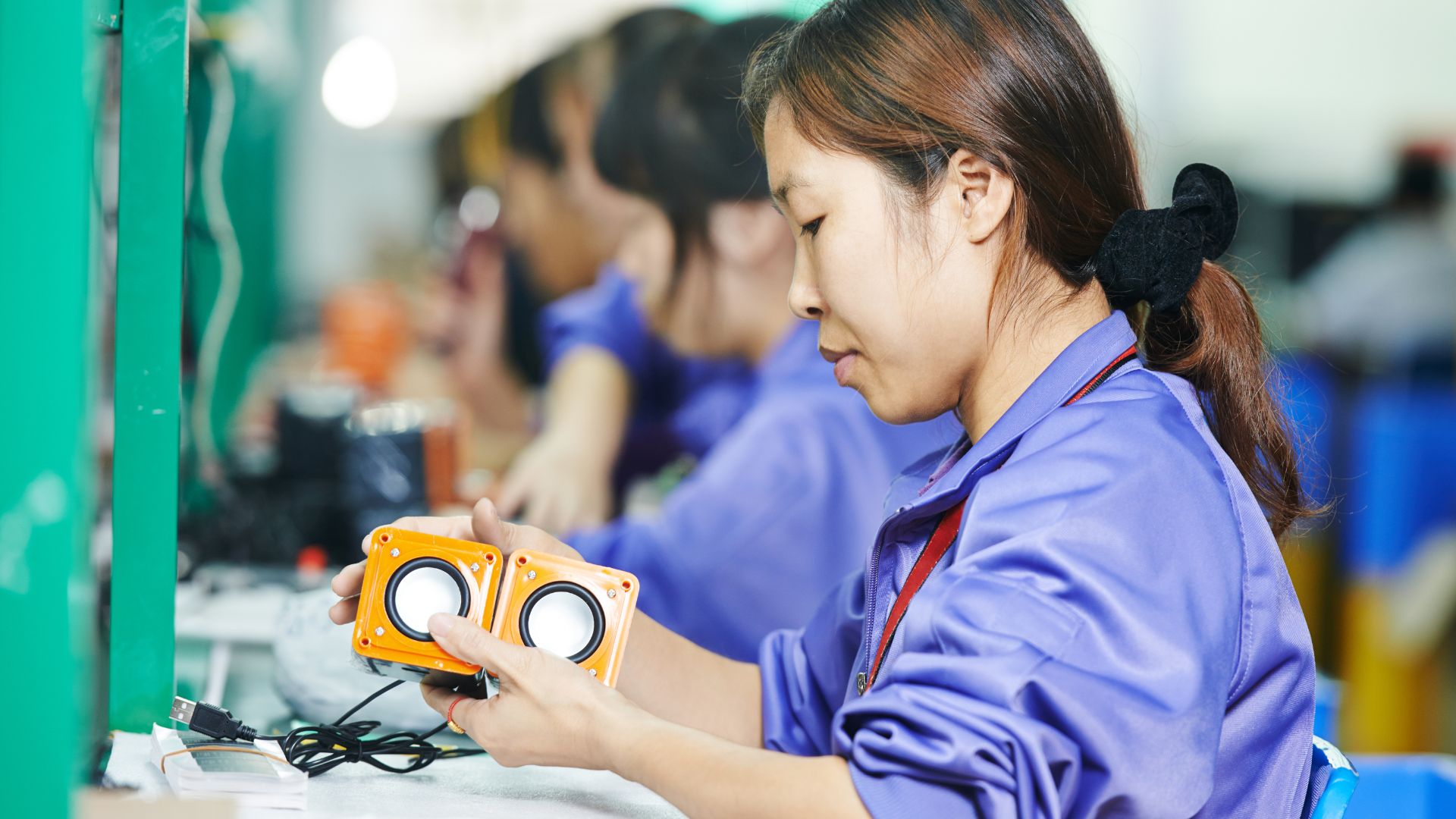When you’re in the business of manufacturing, outsourcing is a natural progression for productivity. Your ability to manufacture products is imperative to your business – without your goods, you have nothing to provide customers. This means that you not only need to ensure your production process is in order, but your shipping and delivery methods are equally important and because China has the largest percentage of manufacturing output annually, they are a primary source of congestion this year.
Overseas manufacturing comes with the responsibility to track shipping trends and anticipate delays more so than with domestic manufacturing. For a number of reasons, shipping and trade are increasingly becoming congested.
Statista’s data on global manufacturing tells us that China accounts for nearly 29% of the world’s total manufacturing output. With the Lunar New Year, Beijing Olympics, and COVID-19, there’s a lot stacked against import and export in 2022. Let’s take a look at the current factors contributing to this phenomenon.
What Is the Lunar New Year?
The Chinese New Year – also known as the Lunar New Year – translates from Mandarin to mean, “Spring Festival.” Unlike Western European countries which adopted the Gregorian calendar, many Eastern and Asian countries abide by a much older calendar.
Chinese Tradition
Historians believe the Lunar New Year has been a part of Chinese and Eastern tradition since the 14th century BCE. Historical records show documentation of the Spring Festival dating back to the Shang dynasty. Because tradition is such an integral part of many Eastern cultures, knowing how important the Lunar New Year is can help to understand its effect on the manufacturing industry.
Communities in China, Vietnam, and Korea, among others, celebrate the Lunar New Year. If you have business partners in these countries, this holiday will affect your supply. For instance, the Lunar New Year is a public holiday in China – just as the U.S. celebrates its own New Year. However, in China, a new year means a full week of time for celebration; Chinese citizens are granted a seven-day public holiday to ring in their new year. And it does not always align with the start of a Gregorian new year.
2022 – Year of the Tiger

The Lunar New Year starts at the first New Moon in January and celebrations culminate with the first Full Moon, most often in February. This year, the Chinese New Year began on February 1st. This means that non-essential businesses – including any China-based contract manufacturing outsourcing – were closed the first week of February. Just as western countries experience a post-holiday lull, you can expect partners in eastern countries to experience similar circumstances.
Celebrations for the new year extend far more in China than in the U.S. Chinese citizens enjoy the annual Spring Festival for 15 days, participating in the Lantern Festival on the last day. Understanding these traditions, anticipating delays should be relatively easy. That being said, a number of other factors compounded output delays from China manufacturing companies.
Impact of COVID-19
We have yet to see an end to the global COVID-19 pandemic. Despite mitigation efforts and countless new international protocols, the Coronavirus is likely to remain a part of the global marketplace for a while longer.
Variations
The ongoing mutation of the Coronavirus means that it will continue to impact people all over the world, on all levels of the manufacturing supply chain. Regardless of whether you employ domestic or overseas manufacturing, the Coronavirus can infiltrate your business from the ground up. Experts have no way of knowing how many more variants of COVID-19 can or will emerge, as there is still so much to learn about the virus.
Unfortunatley, from a commerce perspective, the only way to truly keep things safe for everyone is to maintain additional safety and health protocols and encourage employees to stay home when sick. While this is what’s best for individuals and global health, the emergence of new Coronavirus strains means that these protocols should be considered in all plans for the foreseeable future.
Infection Rates
Infection rate data shows that there are typically spikes in positive COVID-19 cases after events where many people have gathered. Considering the Lunar New Year and Beijing Olympics, it’s safe to assume that infection rates will increase in China. If you have any partnerships with contract manufacturing outsourcing, anticipate further delays as workers take time to recover.
These positive cases will domino effect down to increasing congestion at ports for import and export shipping. It’s likely that this effect will take some time to become apparent, as we know that the virus is capable of incubating for a matter of days before people display or feel symptoms. If you have not yet been impacted by shipping congestion — you will most likely be soon.
Worldwide Shipping Congestion

China is not alone in its struggle with import and export. Manufacturers and businesses of all industries are experiencing delays in shipments and deliveries. Global commerce in the time of COVID-19 has seen unprecedented obstacles. This means it’s essential to consider the following when calculating your margins this year.
Personnel Shortages
As previously mentioned, the variations of COVID-19 and fluctuating infection rates are sure to influence all levels of business. When people are sick and expected to remain in quarantine, they are therefore unable to work at their normal rate. If your overseas manufacturing facility is experiencing personnel shortages, this is going to affect productivity.
Similarly, if the men and women who operate cargo ships and shipping docks are out sick, this is going to make shipping and processing times slower. In order to minimize the spread of Coronavirus, keeping staff at all levels is essential. Therefore, it’s important to not only stay on top of each area of your business, including overseas manufacturing but also keep customers and clients well-informed.
Shift in Priorities
Overseas manufacturing is popular because China has such low manufacturing costs. That being said, understanding the priorities of Chinese citizens is required if you intend to contract them as outsourced labor. In addition to the Chinese New Year and COVID-19 effects, China is also the host of the 2022 Winter Olympics.
All people have personal lives outside of work, regardless of their citizenship. Just as Americans have been proud to host Olympic games in the past, Chinese citizens are proud — especially those in and around Beijing — to have the honor. Moreover, hosting the Olympics contributes to an increase in traffic and travel throughout the country. Hosting the Olympics and increased domestic traffic are also going to affect manufacturing and shipping on that local level.
The global marketplace is beholden to the people who contribute to it. Unfortunately, the world population must still struggle with COVID-19 and its devastating effects. Although the onset of the pandemic was unprecedented and difficult to have anticipated, there is a lot you can do now to maintain and improve your business.
Overseas manufacturing comes with a lot of nuance and responsibility that may be beyond your own scope of knowledge. The task of analyzing worldwide trends and anticipating congestion and shortages — as we are soon to see more of — doesn’t have to fall to you alone. As an expert in the machinations of supply chains, we can help your business source and implement overseas manufacturing with our proven management skills.





